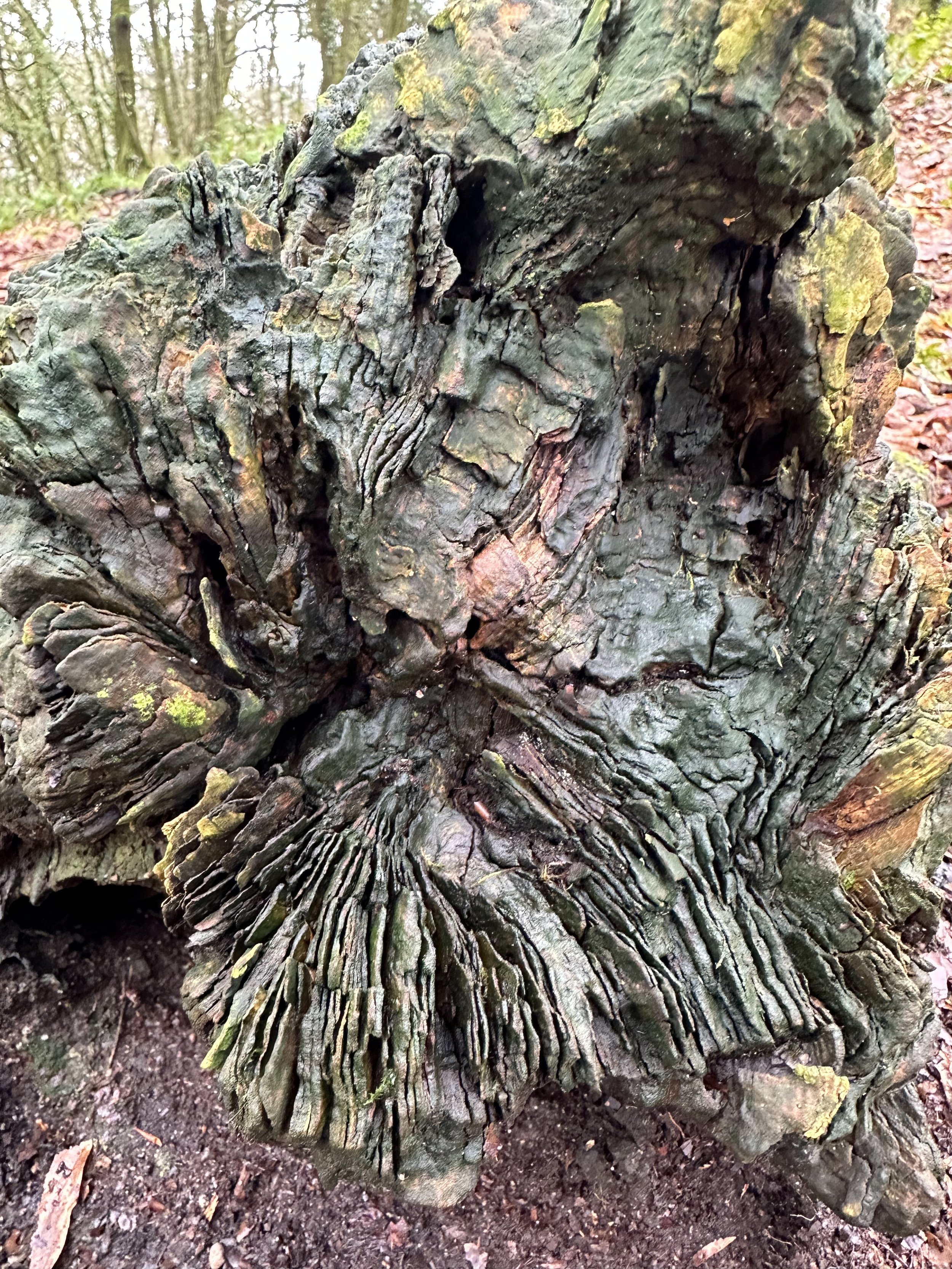
Lion’s Mane Mushroom Extract
Neuroprotective and neurotrophic
Cognitive support
Antidepressant and anti-anxiety
Regenerative for gut lining
Helps regulate blood sugar and cholesterol
Modulates immune response
-
(Hot Water / Ethanol
Extract) Amount per ServingBeta-Glucan At least 17.5%
Terpenes/ Terpenoids At least 4.7%
Polyphenols At least 1%
Erinacines At least 2.5%
Hericenones At least 0.3%
-
1 serving of 1000mg (approx. ½ tsp) loose powder daily
Or 2 capsules daily
Or as advised by your health practitioner -
Speak to your doctor if you are pregnant or breast feeding or if you take any prescribed medication before consuming this product.
Ingredients + Cultivation and extraction methods
Hericium erinaceous 50% fruiting bodies hot water extract powder combined with 50% mycelia ethanol extract powder combined to bring the highest concentration of the full spectrum of potentially therapeutic compounds in line with current research.
Unlike the majority of products on the market, our mycelia is grown on liquid fermentation, which means that the growing medium is completely drained, leaving mycelium only, unlike mycelia grown on grain, which is never fully consumed by the mycelium and can never be separated from it, resulting in a starch rich product that is poor in beneficial compounds. Therefore when sellers advertise the presence of polysaccharides, they need to specify that these are beta-glucans because grain starch is also a polysaccharide, albeit devoid of therapeutic effects.
All our extracts are made using the optimal method for drawing out the active compounds determined by scientific research. In lion’s mane case, the fruiting bodies contain water soluble compounds extracted with temperature controlled pressurised hot water. The mycelia contains alcohol soluble compounds and undergoes ethanolic extraction. Both are then vacuum dried into a powder. This powder is many times more bioavailable than a non-extracted ground fruiting body and many times more concentrated than liquid extracts.
It is good to bear in mind that the immune enhancing beta-glucans are not the compound that stimulates nerve-growth-factor synthesis. The constituents that affect nerve growth factor synthesis are erinacines and hericenones, the terpene-bound polyphenols in lion’s mane.
This product contains no fillers, no binders and no additives. It is naturally vegan, free of grain, gluten and soy.
We use vegan pullulan capsule shells derived from tapioca starch.
Current Research
Lion’s mane has a long list of therapeutic qualities, of which its potential to protect and repair the brain and nerves is the most discussed and researched.
BRAIN AND NERVE HEALTH
Its compounds aromatic hericenones C-H, from fruiting bodies, and diterpenoid erinacin A, from cultured mycelium, have been found to induce synthesis of proteins called nerve-growth-factor (NGF) and brain-derived neurotrophic factor (BDNF). Researchers suggest that lion’s mane is the most powerful inducer of NGF synthesis of all currently identified natural substances. NFG is required for the regeneration and development of neurons involved in cognitive and sensorimotor abilities. This can improve nerve and brain related injuries and conditions. BDNF is an important mediator of memory formation and neuroplasticity. Neuroplasticity is our brain’s ability to rewire and expand its neural pathways - vital for learning new skills, evolving and adapting to new environments. Furthermore, lion’s mane increases myelination, which improves the speed of synaptic transmission (ie. how fast information travels within the brain), likely also helping neuroplasticity, and benefitting sufferers of degenerative diseases such as multiple sclerosis.
STRESS AND MOOD
Research suggests that the correlation between stress and low BDNF levels may lead to a less adaptive and responsive nervous system, resulting in depression and chronic anxiety. Lion’s mane’s ability to increase BDNF and likely effect on neuroplasticity offers a potential to positively impact these disorders. Moreover, stress and depression have also been linked to inflammation of the hippocampus, and lion’s mane possesses anti-inflammatory and anti-oxidative action that may further support the treatment of these conditions. Research also proved lion’s mane useful in attenuating PMS and menopausal symptoms.
GASTROINTESTINAL REPAIRING
Lion’s mane is used in traditional Chinese medicine to support digestion and for treating chronic gastritis and bowel inflammation, as well as gastric and duodenal ulcers. Native Americans used to carry the dried powder of various Hericium species to use as a styptic for cuts and wounds (to stop bleeding). Clinical trials with lion’s mane have shown ability to help repair stomach lining, reduce inflammation and increase life quality scores. This mushroom’s polysaccharides also play a role in modulating the composition of gut microbiota, by acting as prebiotics.
PAIN
Lion’s mane also demonstrates the potential to alleviate neuralgia or neuropathic pain caused by diabetes, cancer, surgery or infection of the nervous system, which are debilitating conditions that are resistant to conventional treatments.
https://pubmed.ncbi.nlm.nih.gov/18758067/
https://pubmed.ncbi.nlm.nih.gov/24266378/ https://onlinelibrary.wiley.com/doi/abs/10.1002/ptr.2634
https://pubmed.ncbi.nlm.nih.gov/31413233/
https://www.ncbi.nlm.nih.gov/pmc/articles/PMC7244964/
https://www.frontiersin.org/articles/10.3389/fncel.2019.00363/full
https://www.hindawi.com/journals/ecam/2019/7861297/https://www.frontiersin.org/articles/10.3389/fnbeh.2021.626906/full?gclid=CjwKCAjwiOCgBhAgEiwAjv5whKi3nLoT8QjNSjs4rWMEA5TUp-v-_ApChYBH_fxSKBjR3SlFgy2DHhoCUokQAvD_BwE
https://www.ncbi.nlm.nih.gov/pmc/articles/PMC6982118/
https://pubmed.ncbi.nlm.nih.gov/12675022/
https://jonlieffmd.com/blog/myelin-facilitation-of-whole-brain-neuroplasticity
https://neuro.psychiatryonline.org/doi/full/10.1176/appi.neuropsych.12050109
https://pubmed.ncbi.nlm.nih.gov/20834180/
https://www.ncbi.nlm.nih.gov/pmc/articles/PMC3835629/
https://pubmed.ncbi.nlm.nih.gov/26853960/
https://www.ncbi.nlm.nih.gov/pmc/articles/PMC5689651/
https://www.sciencedirect.com/science/article/abs/pii/S095528631730815X
https://www.ncbi.nlm.nih.gov/pmc/articles/PMC3852124/
https://www.jstage.jst.go.jp/article/bbb/67/6/67_6_1292/_pdf
https://www.ncbi.nlm.nih.gov/pmc/articles/PMC4052699/


